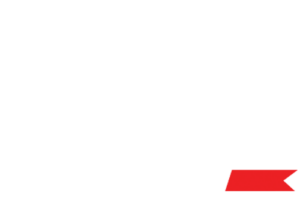Top 5 reasons why products fail
The BBA gives firm advice on why the testing of building products can never be a case of hit or miss.
The record charts used to be called the BBC hit parade. And a hit was a successful tune or song. There was even a quiz panel TV programme called ‘Juke Box Jury’ where celebrities predicted new songs to be hits or misses. Since those days, a number of other charts have cropped up in other areas; top ten TV personalities of the year, top five films, top five holiday destinations etc. In the world of building and construction, it is unlikely that anyone has come up with popularity charts for products and systems. It might be a fun exercise for people operating within the industry, but most of us are too busy to be speculating in areas of pure interest. It could be said that it simply wouldn’t be particularly productive to get side tracked with popularity charts for the purposes of amusement. However, there is an exception to that notion. The BBA have introduced a top five chart with a difference. Our Test Services team have put together the following:
Introducing The BBA’s Top 5 Reasons Why Products Fail
Far from being a concept born of idle curiosity, it is intended to be helpful and informative to manufacturers wishing to avoid common pitfalls when commissioning often costly testing and assessment procedures to obtain BBA Agrément Certificates.
So for your entertainment, as well as the benefit of innovators everywhere, here are the top five in the current BBA Miss Parade:
Straight in at NO 1: Incorrect installation
If a product is being built or assembled onsite for testing, we are required to observe this without interference. If the installation is performed incorrectly and not to standard, we clearly cannot perform the necessary assessments. Similarly, some products are delivered incorrectly assembled. For example, where we are assessing an exposed surface condition, that surface needs to be free from extraneous materials. Some items have been tampered with to such an extent that external substances cannot be removed without damage to the product surface.
A tip for the top at NO 2: Inadequate Product Spec
Sometimes the product does not meet the specification requirements of the standard. For example, samples submitted for thermal conductivity tests are required to be smooth and flat with parallel surfaces to enable good contact between the specimen and the plates of the Heat Flow Meter. They also need to be of certain dimensions to allow testing using specially designed equipment.
NO 3 and rising: Poor packaging
Occasionally samples are not packaged adequately to protect them in transit; they become exposed to moisture and/or damaged beyond use, often with missing or illegible labelling making it difficult or impossible to identify different batches/lots.
NO 4: Cavity Wall Insulation (CWI) Wet Wall Test failures
The definitive evidence of failure is moisture crossing the cavity, manifesting as damp areas on the block walls. Likely reasons for this will vary according to the type of material used. These can include inadequate fills, inadequate product properties, poor installation or unsuitable equipment, inappropriate cavity width for certain product types. All these can contribute to failure, allowing water/damp to travel across to the inner wall.
Last but definitely not least NO 5: External Wall Insulation (EWI) dynamic wind loading test failures
With ETICs systems, wind loading failures are due to pull through of fixings (either through the insulation or sheathing) or pull out of fixing from masonry or sheathing, or delamination of render from insulation. Note: The absolute number one cause of these failures is poor installation.
In the Building and Construction industry, if a new product is issued with a BBA Certificate, and subsequently becomes a hit in the market place, it will have nothing to do with hype or chance, just pure innovation genius combined with first class testing expertise. Some manufacturers whose products come close but fail at the end of the day may come away with a feeling that life has treated them unfairly. But then is life fair? The jury’s still out on that one.
Share This Story, Choose Your Platform!
Related News
Top 5 reasons why products fail
The BBA gives firm advice on why the testing of building products can never be a case of hit or miss.
The record charts used to be called the BBC hit parade. And a hit was a successful tune or song. There was even a quiz panel TV programme called ‘Juke Box Jury’ where celebrities predicted new songs to be hits or misses. Since those days, a number of other charts have cropped up in other areas; top ten TV personalities of the year, top five films, top five holiday destinations etc. In the world of building and construction, it is unlikely that anyone has come up with popularity charts for products and systems. It might be a fun exercise for people operating within the industry, but most of us are too busy to be speculating in areas of pure interest. It could be said that it simply wouldn’t be particularly productive to get side tracked with popularity charts for the purposes of amusement. However, there is an exception to that notion. The BBA have introduced a top five chart with a difference. Our Test Services team have put together the following:
Introducing The BBA’s Top 5 Reasons Why Products Fail
Far from being a concept born of idle curiosity, it is intended to be helpful and informative to manufacturers wishing to avoid common pitfalls when commissioning often costly testing and assessment procedures to obtain BBA Agrément Certificates.
So for your entertainment, as well as the benefit of innovators everywhere, here are the top five in the current BBA Miss Parade:
Straight in at NO 1: Incorrect installation
If a product is being built or assembled onsite for testing, we are required to observe this without interference. If the installation is performed incorrectly and not to standard, we clearly cannot perform the necessary assessments. Similarly, some products are delivered incorrectly assembled. For example, where we are assessing an exposed surface condition, that surface needs to be free from extraneous materials. Some items have been tampered with to such an extent that external substances cannot be removed without damage to the product surface.
A tip for the top at NO 2: Inadequate Product Spec
Sometimes the product does not meet the specification requirements of the standard. For example, samples submitted for thermal conductivity tests are required to be smooth and flat with parallel surfaces to enable good contact between the specimen and the plates of the Heat Flow Meter. They also need to be of certain dimensions to allow testing using specially designed equipment.
NO 3 and rising: Poor packaging
Occasionally samples are not packaged adequately to protect them in transit; they become exposed to moisture and/or damaged beyond use, often with missing or illegible labelling making it difficult or impossible to identify different batches/lots.
NO 4: Cavity Wall Insulation (CWI) Wet Wall Test failures
The definitive evidence of failure is moisture crossing the cavity, manifesting as damp areas on the block walls. Likely reasons for this will vary according to the type of material used. These can include inadequate fills, inadequate product properties, poor installation or unsuitable equipment, inappropriate cavity width for certain product types. All these can contribute to failure, allowing water/damp to travel across to the inner wall.
Last but definitely not least NO 5: External Wall Insulation (EWI) dynamic wind loading test failures
With ETICs systems, wind loading failures are due to pull through of fixings (either through the insulation or sheathing) or pull out of fixing from masonry or sheathing, or delamination of render from insulation. Note: The absolute number one cause of these failures is poor installation.
In the Building and Construction industry, if a new product is issued with a BBA Certificate, and subsequently becomes a hit in the market place, it will have nothing to do with hype or chance, just pure innovation genius combined with first class testing expertise. Some manufacturers whose products come close but fail at the end of the day may come away with a feeling that life has treated them unfairly. But then is life fair? The jury’s still out on that one.
Share This Story, Choose Your Platform!
Related News
Get in touch
Please complete the form below and we will contact you as soon as possible.
To help us to respond to your inquiry as quickly as possible, we have put a handy list of our services below.


